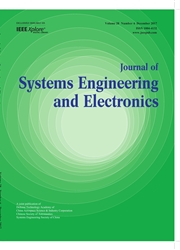

 中文摘要:
中文摘要:
Analysis and design techniques for cooperative flocking of nonholonomic multi-robot systems with connectivity maintenance on directed graphs are presented. First, a set of bounded and smoothly distributed control protocols are devised via carefully designing a class of bounded artificial potential fields(APF) which could guarantee the connectivity maintenance, collision avoidance and distance stabilization simultaneously during the system evolution. The connectivity of the underlying network can be preserved,and the desired stable flocking behavior can be achieved provided that the initial communication topology is strongly connected rather than undirected or balanced, which relaxes the constraints for group topology and extends the previous work to more generalized directed graphs. Furthermore, the proposed control algorithm is extended to solve the flocking problem with a virtual leader. In this case, it is shown that all robots can asymptotically move with the desired velocity and orientation even if there is only one informed robot in the team. Finally, nontrivial simulations and experiments are conducted to verify the effectiveness of the proposed algorithm.
 英文摘要:
英文摘要:
Analysis and design techniques for cooperative flocking of nonholonomic multi-robot systems with connectivity maintenance on directed graphs are presented. First, a set of bounded and smoothly distributed control protocols are devised via carefully designing a class of bounded artificial potential fields (APF) which could guarantee the connectivity maintenance, col ision avoidance and distance stabilization simultaneously during the system evolution. The connectivity of the underlying network can be preserved, and the desired stable flocking behavior can be achieved provided that the initial communication topology is strongly connected rather than undirected or balanced, which relaxes the constraints for group topology and extends the previous work to more generalized directed graphs. Furthermore, the proposed control algorithm is extended to solve the flocking problem with a virtual leader. In this case, it is shown that al robots can asymptotically move with the desired velocity and orientation even if there is only one informed robot in the team. Finally, nontrivial simulations and experiments are conducted to verify the effectiveness of the proposed algorithm.
 同期刊论文项目
同期刊论文项目
 同项目期刊论文
同项目期刊论文
 An overview of recent progress in high-order nonholonomic chained system control and distributed coo
An overview of recent progress in high-order nonholonomic chained system control and distributed coo Distributed observer-based coordination for multiple Lagrangian systems using only position measurem
Distributed observer-based coordination for multiple Lagrangian systems using only position measurem 期刊信息
期刊信息
